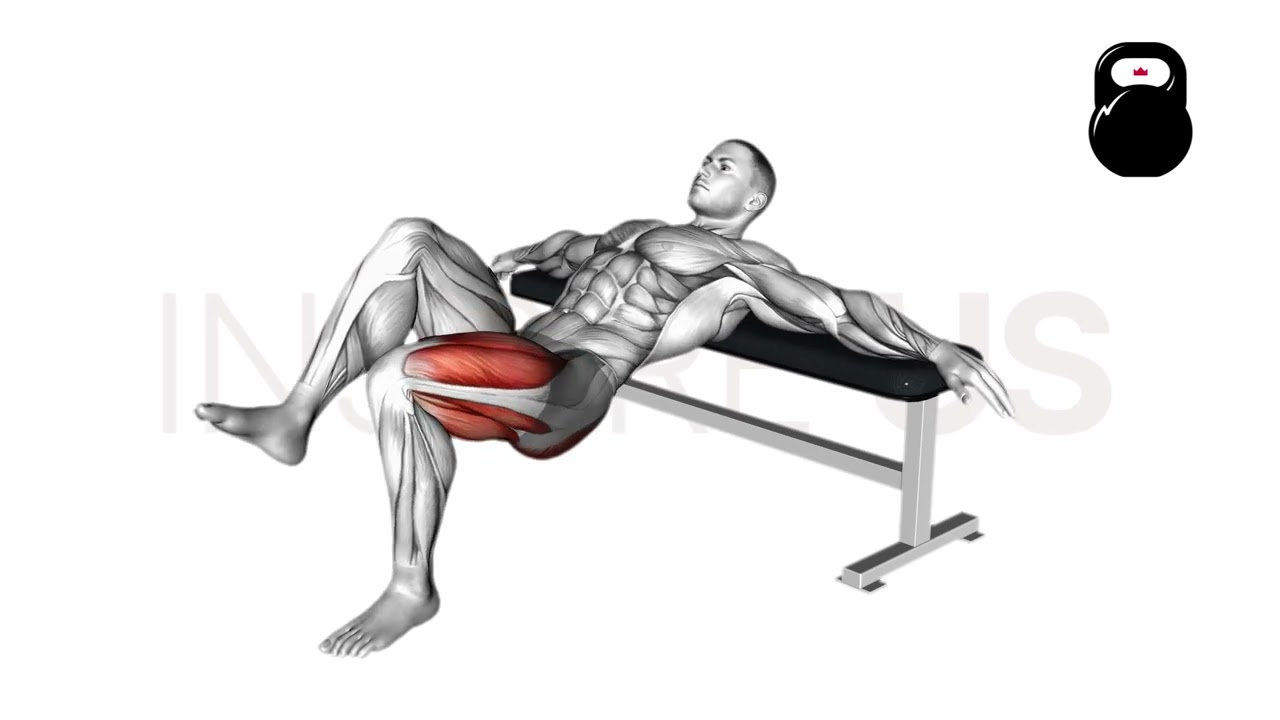Single Leg Hip Thrust: Muscles Worked and More
The single leg hip thrust is a unilateral posterior chain exercise primarily done to train the glute and hamstrings muscles.
While most often seen in calisthenics training programs, the single leg hip thrust can readily be loaded in much the same manner as their conventional cousin - only with a greater challenge as far as balance and coordination goes.
What are Single Leg Hip Thrusts?
The single leg hip thrust is a closed chain compound movement revolving around hip extension in a lying position.
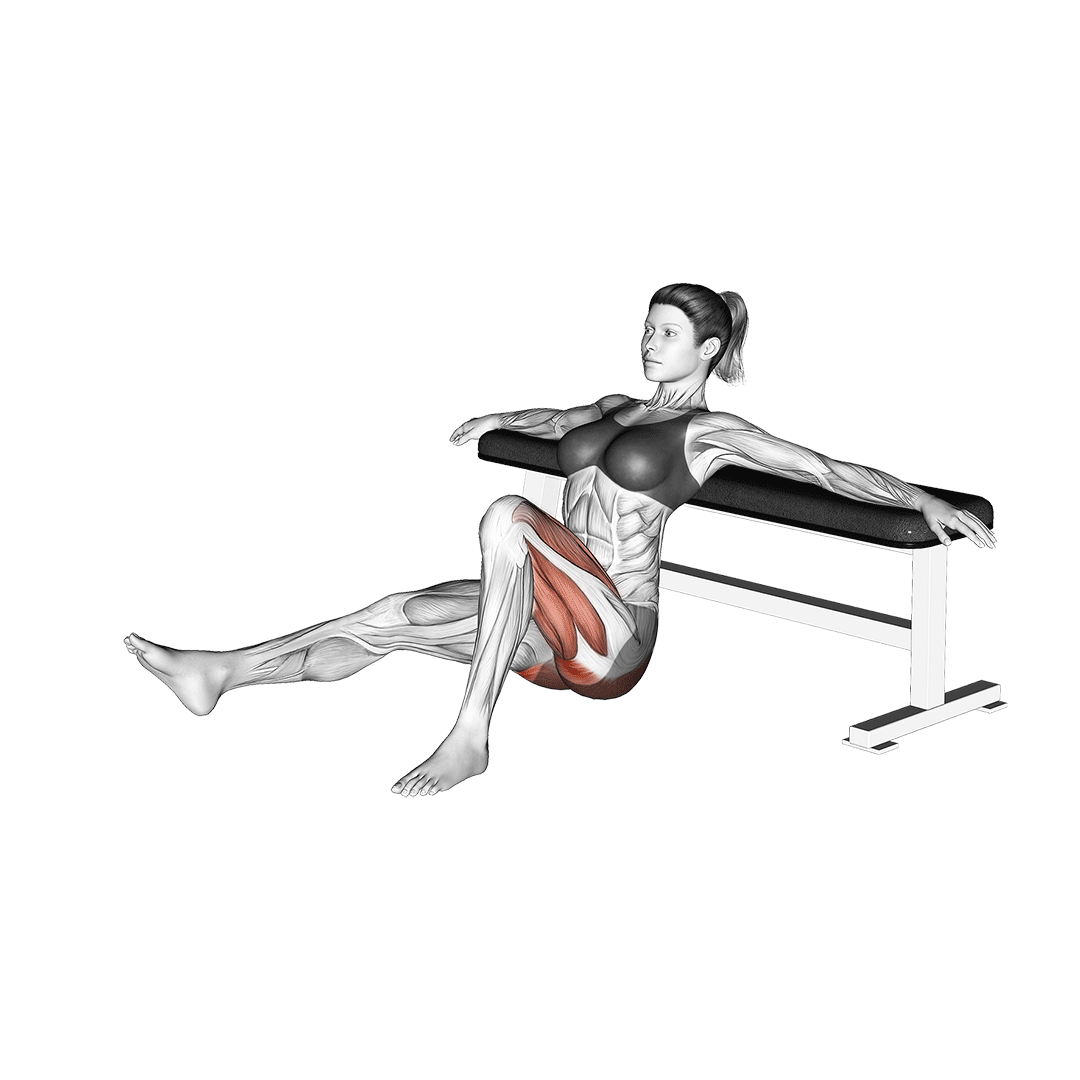
As one can likely guess from its name, the single leg hip thrust is simply a unilateral variation of conventional hip thrusts. Apart from the fact that one leg is raised into the air, the two exercises are much the same and will achieve much the same benefits as well.
In actual practice, the single leg hip thrust is best used either as a progression from two-legged bodyweight hip thrusts or as a method of developing coordination and stability alongside lower posterior chain muscular strength.
To perform the exercise correctly, an exercise bench or similar object will be needed to support the upper back.
If performing the exercise with additional weight, a dumbbell or weight plate small enough in diameter to fit over the lower abdomen will also be required.
How to do a Single Leg Hip Thrust
In order to perform a repetition of the single leg hip thrust, the exerciser will begin by first resting their upper back atop a bench, both feet set far enough away to position the hips beneath the knees and trunk.
The body should form the shape of a letter “U” from trunk to knee, with the hips as low as mobility will allow.
Once stable in the conventional hip thrust position, the exerciser then spreads their arms out along the bench for stability, raising one leg upwards, and driving their remaining heel into the floor to aid in balancing.
With the upper back resting atop the bench and the working leg bent at the knee, the lifter begins the repetition by squeezing their glutes and pushing their hips upwards.
This glute-driven hip extension will eventually terminate at a point where the body forms a relatively flat plane, pelvis parallel with the waist and knee.
Once the apex of the repetition has been reached, the exerciser then proceeds to complete the eccentric phase by slowly releasing tension in their glutes and allowing their hips to lower back downwards in a controlled manner.
Now back in their original position, the repetition is considered to be complete. Don’t forget to also train the other side of the legs as well.
Sets and Reps Recommendation:
If performing single leg hip thrusts with bodyweight resistance alone, volume must be prioritized as progression cannot be driven through resistance.
For the bodyweight variation, 2-3 sets of 8-12 repetitions should be sufficiently intense for most novice and intermediate calisthenics athletes.
Otherwise, if performing the exercise with additional weight, 2-3 sets of 6-10 repetitions is a good baseline to work from.
What Muscles Do One-Legged Hip Thrusts Work?
The single leg hip thrust is a compound exercise due to its dynamic contraction of multiple muscle groups.

Despite this definition, only two muscle groups are actually used as “movers”, whereas the remaining muscles are instead classified as “stabilizers” owing to their static form of contraction.
Mover Muscles
In terms of primary movers, the single leg hip thrust relies on the gluteal muscle group to extend the hips upwards.
Alongside the glutes are the hamstring muscles, where, much like the glutes, they aid in extending the hips upwards as a secondary mover muscle group. Pelvic biomechanics notwithstanding, the hamstrings are also partially responsible for flexion of the knee - an action also sustained throughout the entire hip thrust set.
Stabilizer Muscles
Apart from the aforementioned mover muscles, the core musculature (lower back muscles included) - alongside the calves and quadriceps - are all contracted isometrically to aid in stabilization of the movement.
Unlike the primary and secondary mover muscles, the stabilizer muscles are not taxed to the same degree owing to the isometric manner in which they are contracted.
Although less fatiguing, this static type of contraction also means that such muscles will not develop to the same extent as the mover muscles.
Common Single Leg Hip Thrust Mistakes to Avoid
With the greater complexity of performing a hip thrust with only one leg, maintaining proper form is all the more important. Ensure the following common mistakes are not present in your training so as to avoid injury.
Knee Caving Inwards
Exercisers who set up their single leg hip thrust by first placing the legs a significant width apart may begin to rotate the femur or knee inwards to compensate for the lack of stability. Doing so increases strain within the knee joint and creates a far less secure stance as a whole.
Though the single leg hip thrust is set up in much the same way as a two-legged one, it is important to keep in mind that the former exercise is harder to stabilize.
Aim to initially set the feet several inches narrower than you would for a conventional hip thrust, accounting for only one leg being worked at a time.
Foot Too Far From Hips
As is the case with regular hip thrusts as well, the feet should be set close enough to allow for full knee flexion. Placing the feet too far from the hips will extend the knee somewhat, reducing the exercise’s maximum depth and limiting overall range of motion.
An ideal single leg hip thrust will have the ankle nearly vertical with the knee and calves, allowing for a full range of motion without straining the knee joint.
Poor Range of Motion
On a related note to an excessively close foot position, performing single leg hip thrusts with a poor range of motion can also reduce the effectiveness of the exercise.
Each repetition should begin and end with the pelvis a significant distance below both the knees and trunk, whereas the top of the movement should involve a flat plane from knees to chest.
Failing to complete a full range of motion will not only limit the effectiveness of the hip thrust, but also potentially lead to strain of the knee joint and can even eliminate the hamstrings from the movement if the ROM is particularly short.
Excessively Rapid Tempo
To maximize tension on the glutes and hamstrings, a sufficiently slow time under tension must be used.
Generating explosive momentum or otherwise rushing through the repetition can lead to a greater risk of injury, diminished muscular development and the creation of issues like sticking points or partial range instability.
This is especially important during the eccentric phase of the repetition, where gravity assists the hips in descending downwards - reducing tension in the muscles. The exerciser must strive to keep as much tension therein as possible despite this particular disadvantage of hip thrusts.
Alternatives and Variations of the Single Leg Hip Thrust
If the single leg hip thrust is too unstable for your liking - try the following alternatives out. All three achieve much the same developmental effects without the same inherent disadvantages.
B Stance Hip Thrusts
B stance hip thrusts are essentially single leg hip thrusts performed with the non-working heel still touching the floor.
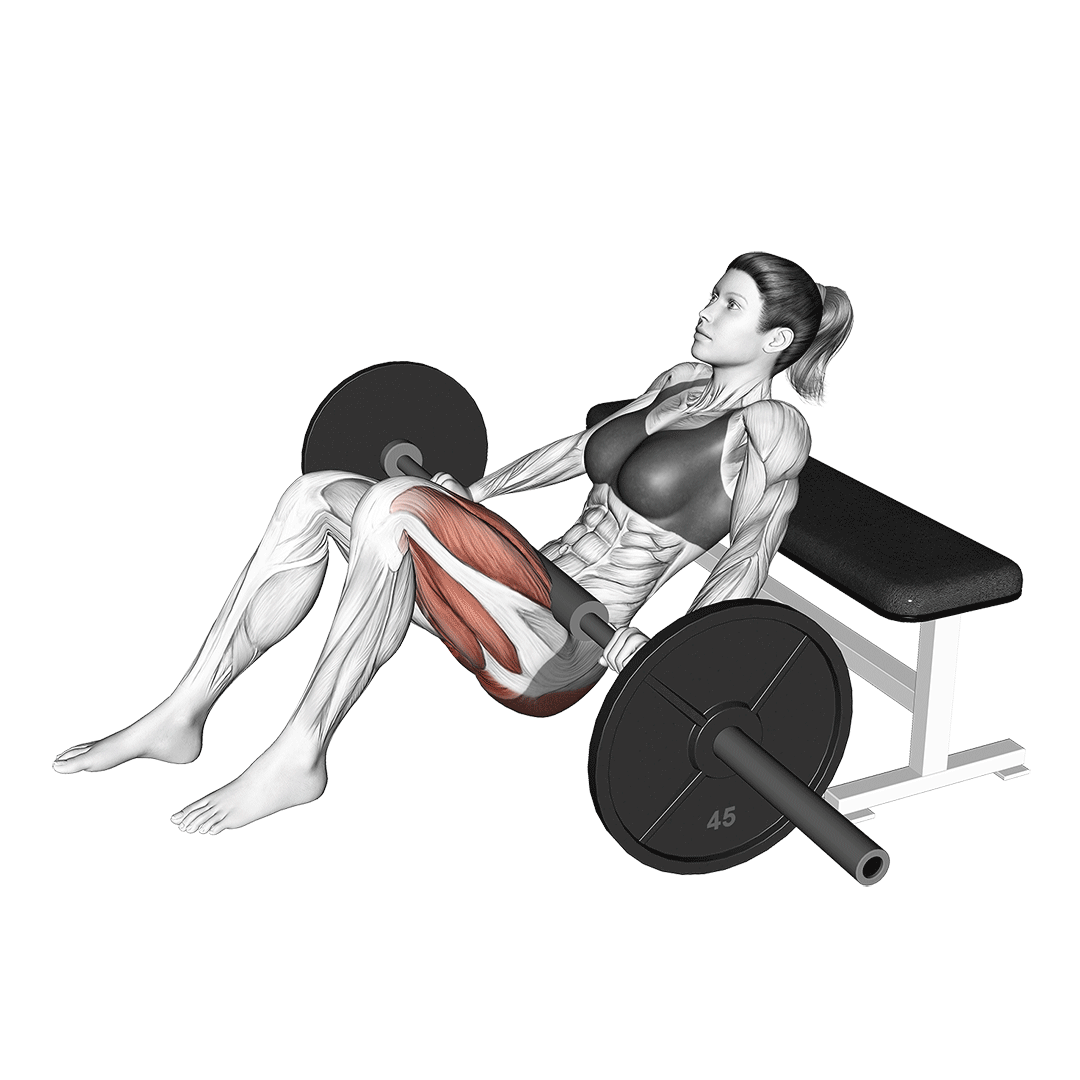
With the non-working heel providing additional stability and support without necessarily contracting the muscles on the same side, B stance hip thrusts are the perfect substitute for single leg hip thrusts in terms of safety, stability and loading capacity.
Double Elevated Hip Thrusts
As can likely be guessed by its name, the double elevated or “two bench” hip thrust is simply a conventional bilateral hip thrust with both the upper back and feet elevated off the floor.
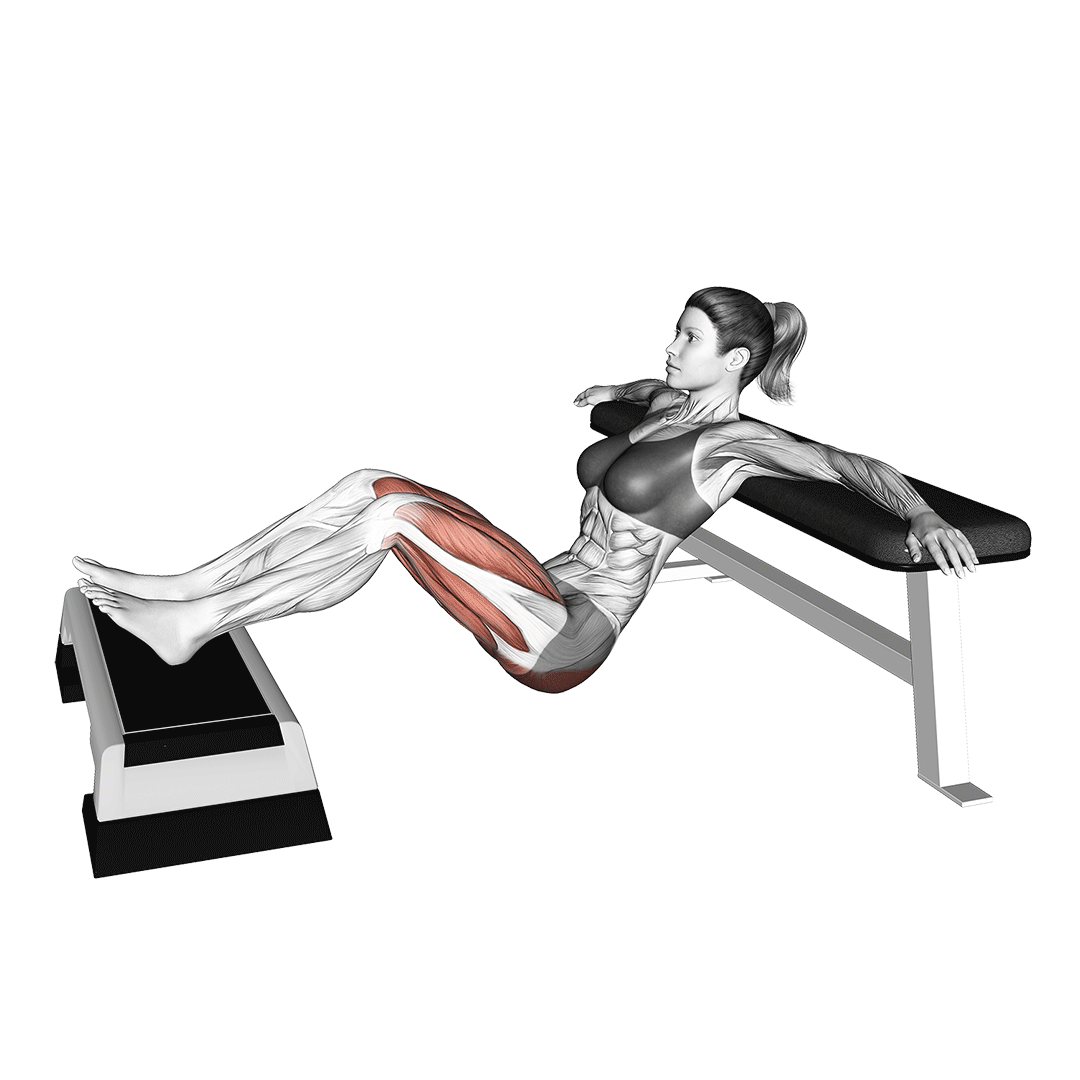
This maximizes range of motion and allows for a greater range of action in both the hamstrings and glutes - making it inherently superior to the single leg hip thrust when speaking strictly of muscular contraction.
Of course, with a far deeper depth, this particular alternative requires greater mobility as well. Master conventional hip thrusts before swapping out to the dual elevated variant.
Cable Donkey Kicks
For an exercise that maintains a constant level of tension throughout the set, cable donkey kicks are a lifter’s best bet.
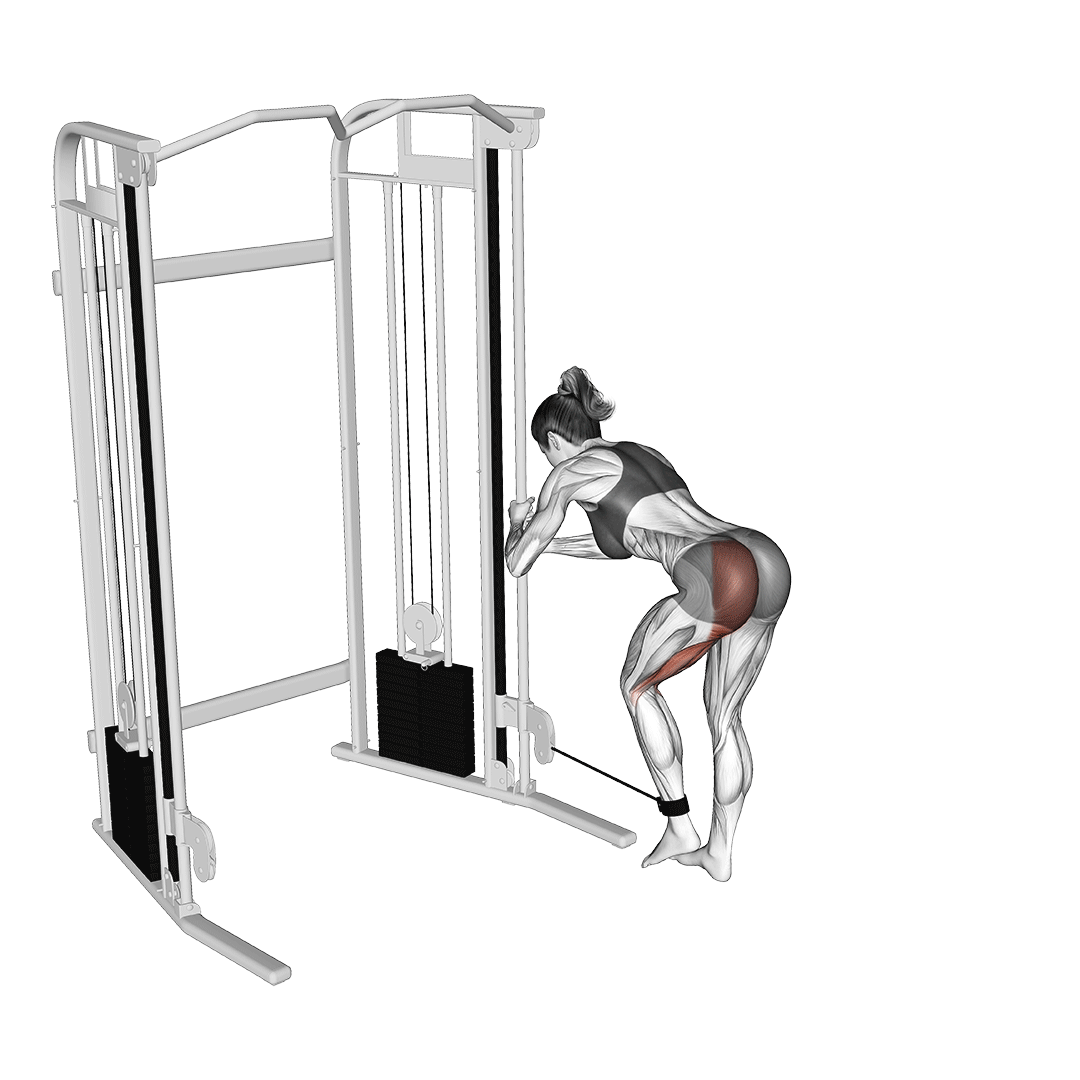
Much like single leg hip thrusts, cable donkey kicks excel at working the glutes and hamstrings in a highly focused and unilateral fashion. However, because the hips remain relatively stationary during the movement, greater emphasis on the hamstrings will be present.
Frequently Asked Questions (FAQ)
Are Single Leg Hip Thrusts Worth It?
Single leg hip thrusts are a solid exercise, so long as they fit into your training goals.
If you have muscular imbalances of the lower posterior chain, no weight equipment or simply wish to build stability in a one-legged stance - then they are absolutely worth it.
What is Better, B Stance or Single Leg Hip Thrusts?
Outside of highly specific training cases, the B stance hip thrust is superior to its single leg counterpart. As a more stable, loadable and safe movement, there are very few downsides to picking the B side variant over the single leg hip thrust.
Are Hip Thrusts Only for Glutes?
Though the glutes are indeed the principle mobilizer muscle in all variations of hip thrust, the hamstrings are also worked through dynamic contraction as well.
As such - no, hip thrusts are not solely for the glutes, as they train the major lower posterior chain muscle groups through a full range.
References
1. Palmer, Jac & Needham, Laurie & Brazil, Adam & Bezodis, Ian. (2020). COMPARISON OF THE BILATERAL AND UNILATERAL BARBELL HIP THRUST.
2. Neto WK, Vieira TL, Gama EF. Barbell Hip Thrust, Muscular Activation and Performance: A Systematic Review. J Sports Sci Med. 2019 Jun 1;18(2):198-206. PMID: 31191088; PMCID: PMC6544005.

